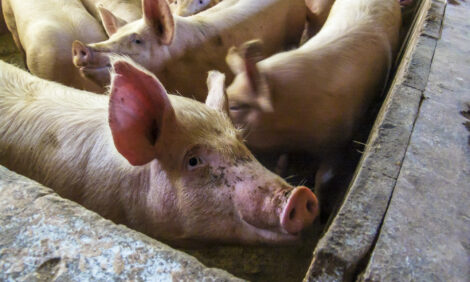



September 2004 USDA Hogs and Pigs Report Commentary by Dr Mike Brumm
US - Dr Mike Brumm, Extension Swine Specialist, University of Nebraska comments on the latest USDA Hogs and Pigs report.
 Mike Brumm |
Many analysts have already commented on USDA upwards revisions to the June 1, 2004 inventory in Minnesota, Iowa and North Carolina. Of course, this upwards revision, plus the growth plans in the September 1 report are a reflection of the profitable state of today’s US pork industry.
Unfortunately, Nebraska continues to decline in pig numbers relative to the US. All pigs kept for market in Nebraska totaled 2.49 million, the same inventory as in the June 1 report. However, Nebraska’s share of the US kept for market inventory declined slightly to 4.49%, another low not seen in Nebraska since the 1960’s. The breeding herd inventory was also stable at 360 thousand head, or 6.02% of the US total. The stability of both the breeding and kept for market numbers from the June 1 to September 1 report support my experiences with Nebraska producers – that is – limited reinvestment in new facilities. The USDA numbers suggest that Nebraska producers are making do with existing facilities, and as they wear out, they are not being replaced by new facilities. In addition, the declining percentage of the US inventory on Nebraska farms also suggests that Nebraska communities are not sharing in the benefits that a profitable industry brings to rural communities.
This report also documents the continuing changes in the Minnesota and Iowa industries. While Iowa has been declining in sow inventory for a number of years, North Carolina is now within 50,000 head of having the same breeding herd inventory as Iowa. With similar sized breeding inventories, North Carolina producers farrowed 1.297 more pigs than Iowa producers in the June to August period. On a similar note, Oklahoma producers farrowed 197 thousand more pigs than Nebraska producers, with both states having a September 1 breeding herd of 360 thousand.
Minnesota now has 11.85% of the kept for market inventory and 9.86% of the breeding herd. The plateau in the breeding herd inventory versus the continued growth in the kept for market inventory is supported by USDA data suggesting Minnesota is the second ranking state for destination of Canadian feeder pigs.
Illinois and Indiana remain very traditional farrow-finish production states. As a percentage of the US inventory, there is little difference between their breeding herd and kept for market inventory. Again, USDA feeder pig and Canadian feeder pig import data suggest these states are not major importers of feeder pigs, nor are they major sources of feeder pigs to surrounding states.
Included in this commentary are updated charts on Canadian live pig imports and the July 1 Canadian inventory. As of the week ending September 18, Canadian feeder pig imports are averaging just over 109,000 pigs per week since January 1. At this pace, we will import over 5.68 million feeder pigs in 2004, a major increase over the 4.86 million imported in 2003. The 3 major states receiving Canadian feeder pigs are Iowa, Minnesota and Nebraska.
The relatively large influx of Canadian feeder pigs into Nebraska, when combined with the breeding herd inventory and kept for market inventory suggests a large number of pigs born in Nebraska are leaving the state for growth to slaughter weight in facilities in other states, most likely Iowa and Minnesota. Regardless of whether ownership of these pigs changes, these pigs do not consume Nebraska grown feed grains, and a majority are not slaughtered in Nebraska slaughter plants.









